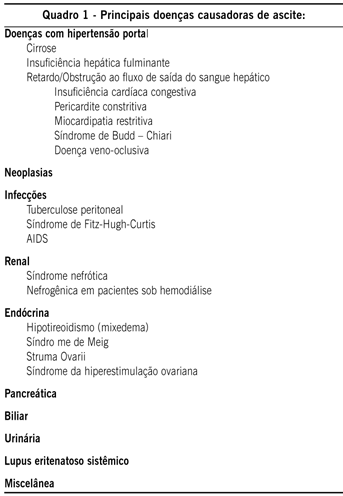The accumulation of free fluid of pathological origin in the peritoneal cavity is named ascites, and, in clinical practice this phenomenon is present in several diseases. The most common cause of ascites is liver cirrhosis. In the pathophysiology of ascites three theories are noteworthy: vasodilation, overflow and underfill. The modern concept suggest that these three theories are present in the same patient with cirrhosis depending on the disease evolution time. The vasodilation theory would be important in the pre-ascitic phase as well as during all the ascites evolution time. The overflow theory would be important in the first months of development of ascites in cirrhosis, and the underfill theory would explain most of the findings in patients with ascites for a long time. This article comments in detailed, several diseases that produce ascites, the diagnostic methods employed in clinical investigation of ascites' complication and therapeutics options available. In each item the evidence grade (A to C) found in medical literature is shown.
Ascite; Liver cirrhosis; Pathophysiology; Diagnosis and treatment

 Ascite: state of the art based on evidences
Ascite: state of the art based on evidences